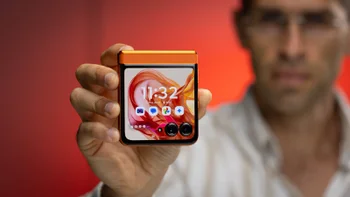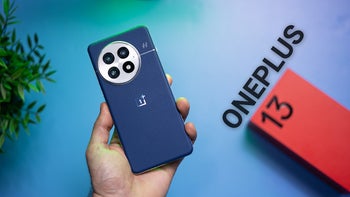Future smartphones might feature a temporary pop up keyboard on the screen

If you remember when the late Steve Jobs introduced the iPhone in 2007, he made a big deal about how a touchscreen phone would eliminate the need for a fixed QWERTY keyboard that couldn't change no matter what content was on the screen. And this, combined with multi-touch, wowed the Macworld audience watching history in the making. Despite the advantages of not having a fixed QWERTY keyboard taking up screen space, some users still prefer to have a physical keyboard.
Tricking users into making it feel as though they are pressing real buttons on a glass display was the idea behind the BlackBerry Storm. The first-generation Storm was a buggy mess, but the second-generation model did give users some of the same feedback that they would experience when using a physical QWERTY. And BlackBerry continued to look for a way to combine the modern touchscreen smartphone with a physical keyboard (as did some early Android models) but even hiding the keyboard using a sliding mechanism didn't catch on.
These days, most people are used to typing on a virtual QWERTY and the demand for a phone with a physical keyboard is probably at its lowest point and continues to decline. But there is still something to be said about being able to feel for certain buttons with your fingers while not looking at the screen. So while haptic feedback gives the feeling of pressing a button, it doesn't help users find their way around a virtual keyboard without looking.
According to Gizmodo, a solution is being developed by researchers at Carnegie Mellon University’s Future Interfaces Group (FIG) with a creation they call Flat Panel Haptics. Described in a paper that was submitted to the ACM CHI Conference on Human Factors in Computing Systems in Hamburg, Germany. The paper explains how, with the use of embedded electroosmotic pumps (EEOPs), buttons could be made to pop up on OLED displays temporarily.
OLED displays would be placed on top of the electroosmotic pumps to help form a bump that would be large enough for the fingers of a smartphone user to differentiate from other buttons created the same way. The idea is for the pop up buttons to appear when content is on the screen that would usually result in the appearance of the virtual keyboard. The technology is far from ready to be used immediately since the shape and size of these pop-up buttons are determined in advance.
Still, this might be a technology that will mature enough so that in the future, those who want all of the screen real estate that a touchscreen phone offers but still want to type on a physical keyboard can have their cake and eat it too.
Follow us on Google News













Things that are NOT allowed:
To help keep our community safe and free from spam, we apply temporary limits to newly created accounts: